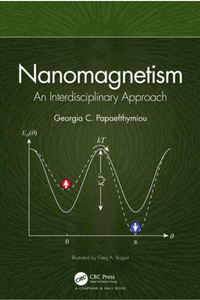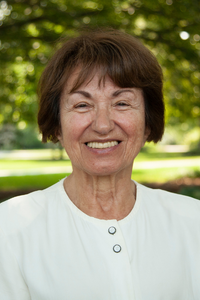Villanova Professor Considers Small Particles on a Large Scale in New Book

VILLANOVA, Pa – For advanced science students, biopharmaceutical researchers, and even patients at the doctor’s office, nanoscience is an important yet unseen part of everyday life. Villanova University Physics professor Georgia Papaefthymiou, PhD, explores how nanomagnetism, a developing field of nanoscience, can be applied across disciplines to dramatically shape the world of physics, health care and biology, to name a few, in her new book Nanomagnetism: An Interdisciplinary Approach (Chapman and Hall, 2022).
Nanoscience is a field that focuses on incredibly small types of matter called nanomaterials—which have a dimension of 10-9 of a meter. Though nanomaterials are much too small to be seen without a microscope, they play a big role in technologies like magnetic recording media, permanent magnets, magnetic resonance imaging (MRI) enhancements, and magnetically-guided drug delivery. Dr. Papaefthymiou’s book focuses on the ways magnetized nanomaterials function and their impact on disciplines across the sciences. “Nanoscience is where quantum mechanics meets classical physics, and materials science and engineering intersect with physics and chemistry,” she explains.
Among other applications of nanomagnetism, Dr. Papaefthymiou notes two of its medical purposes in the book: enhancing MRI images and improving cancer therapy, specifically using it to deliver radiation locally to cancerous tumors. “Nanomagnetism helps us develop new medical approaches to imaging and better understand medical problems,” she says.

In addition to nanomagnetism’s application within many fields of science, new advances in nanomaterial sample preparation, nanopatterning techniques and magnetic measurement instrumentation have made nanoscience a rapidly growing field. Dr. Papaefthymiou notes that one goal of her book is to help establish a common language between scholars to help facilitate effective research.
“Boundaries between disciplines have become diffused and often, researchers have background in more than one field,” she says. “Collaborators need a new culture of working across multiple disciplines. It has become imperative that scientists trained in one discipline understand the language of another.”
About Villanova University’s College of Liberal Arts and Sciences: Since its founding in 1842, Villanova University’s College of Liberal Arts and Sciences has cultivated knowledge, understanding and intellectual courage for a purposeful life in a challenging and changing world. With more than 40 majors across the humanities, social sciences and natural sciences, it is the oldest and largest of Villanova’s colleges, serving more than 4,500 undergraduate and graduate students each year. The College is committed to a teacher-scholar model, offering outstanding undergraduate and graduate research opportunities and a rigorous core curriculum that prepares students to become critical thinkers, strong communicators, and ethical leaders with a truly global perspective.
